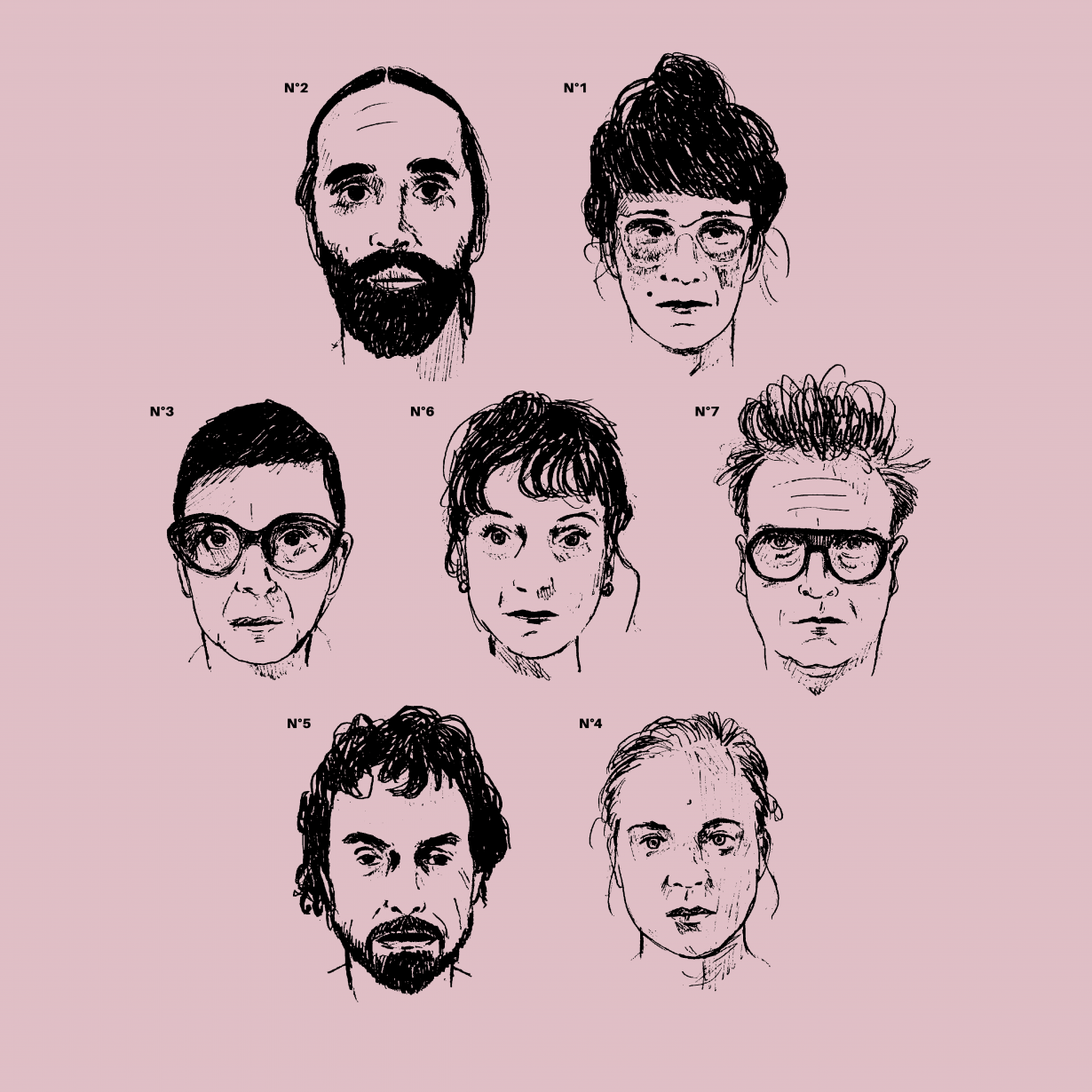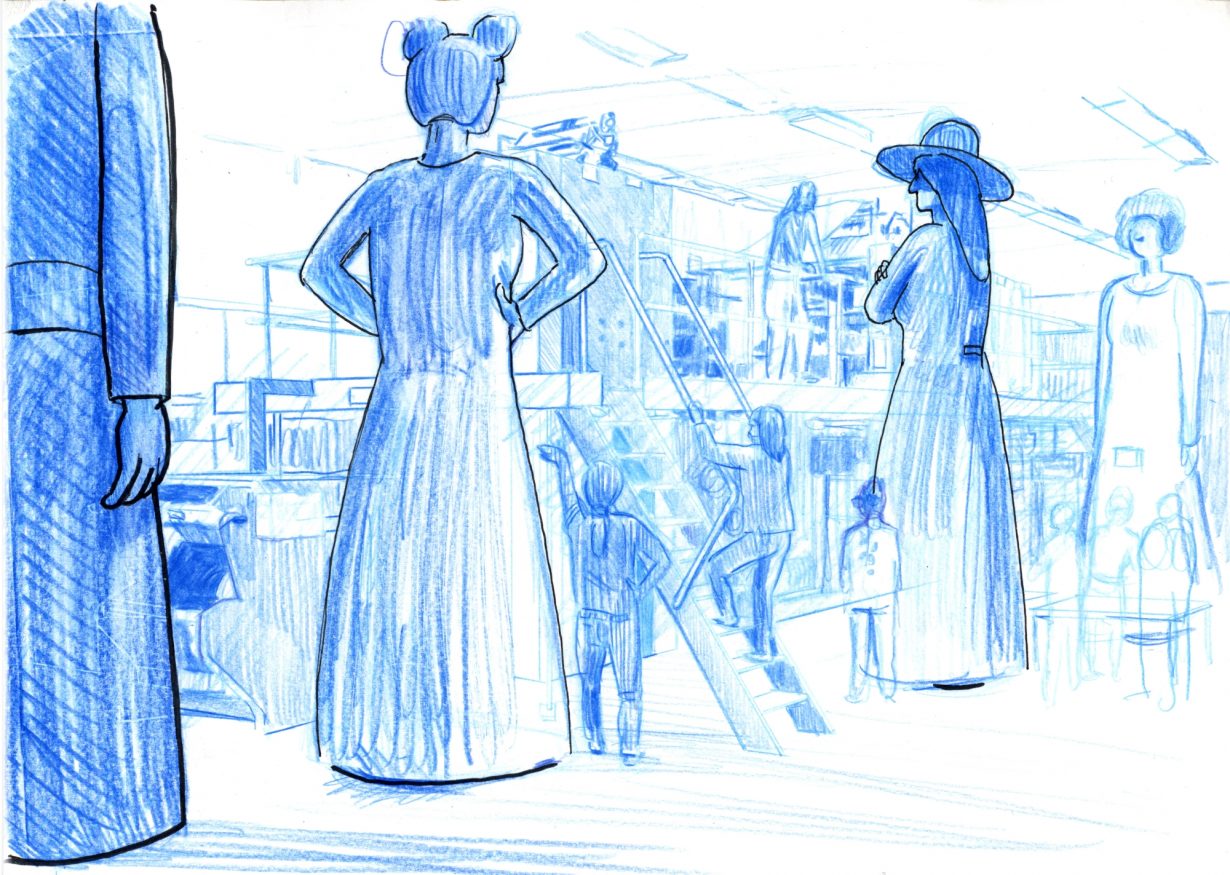ArtReview sent a questionnaire to artists and curators exhibiting in and curating the various national pavilions of the 2024 Venice Biennale, the responses to which will be published daily in the leadup to and during the Venice Biennale, which runs from 20 April – 24 November.
Petticoat Government, a collective project by Studio Speculoos Sophie Boiron and Pierre Huyghebaer, curator Antoinette Jattiot, NORD architect Pauline Fockedey and Valentin Bollaert and artists Simona Denicolai and Ivo Provoost, is representing Belgium; the pavilion is in the Giardini.

ArtReview What do you think of when you think of Venice?
Petticoat Government We think of one scene from Candide by Voltaire where six dethroned kings admit to each other in the back room of an inn that they have come here for the Venice Carnival. One object that is part of the Petticoat Government scenario reminds in a way the poem by Arnaldo Fusinato ‘The last hours in Venice’ [1849] that is another entry point to think about the city; it evokes the white flag that waves on the bridge, and the surrender of the Serenissima to the Austrian army. This poem by Fusinato also inspired one of the stanzas of Franco Battiato’s song Bandiera bianca [1981].
AR What can you tell us about your exhibition plans for Venice?
PG The biennale isn’t a final destination but a pause in a broader scenario. Bringing together the disciplines of art, curating, architecture, typography and cartography, we seek to take up the exhibition format while working in collaborative and transdisciplinary mode to transform and explode it, in a fictionlike work that unfolds in successive chapters using existing figures/objects of giants coming for the popular and folkloric cultures of northern Europe. And that traverses time and space. Joining together here to effect a crossing of boundaries both physical and symbolic, we are linked as a collective by past collaborations and a role we can embody as mediators and critics in our respective fields, artistic or otherwise. It is from this position that we would like to propose to examine the ways we understand popular, alternative forms of collective organisations and their modes of participation.
AR Why is the Venice Biennale still important, if at all? And what is the importance of showing there? Is it about visibility, inclusion, acknowledgement?
PG This deals with the opportunity to unravel the idea of ‘representing a nation’ and to foster a cross-disciplinary, collective project that addresses the context: in a national enclave in the middle of a lagoon built on wooden poles / of contemporary art and its codes / the frail nature of territorial limits and the porosity of cultures. Our scenario unfolds in episodes along a journey, each chapter questioning and reacting to the context in which the action takes place in terms of scale and temporality. Three months in Leuven, three hours on Lake Resia, a night in the roller press printing plant of La Gazzetta dello Sport, thirty minutes on the Venice lagoon, seven months in the Pavilion, then four weekends in Charleroi and finally in Dunkirk. The giants are charged with stories and legends from their biotope that distort, relativise, enlarge, miniaturise and offer kaleidoscopic visions.
AR When you make artworks do you have a specific audience in mind?
PG We don’t target a particular audience, we have everyone in mind, with one’s own background everyone can find his or her own way into the work, and our responsibility is to keep all doors as wide open as possible to welcome all diversities.

AR Do you think there is such a thing as national art? Or is all art universal? Is there something that defines your nation’s artistic traditions? And what is misunderstood or forgotten about your nation’s art history?
PG We’d need to deconstruct this idea of the universal – and/or transparency – bringing back a certain fertile opacity, in the sense of Édouard Glissant, and also deconstruct the idea of a national art and to envision an art that is culturally coloured. With every imaginable blend.
On the other hand, it seems that ‘we’re all inhabitants of the world’ needs to be qualified… from a curatorial/editorial point of view, it’s always surprising to try to define ‘groups’ in order to talk about commonalities or ‘identity’… like, for example, ‘generation’ effects. The same goes for belgitude, a term that seems overused if you try to qualify the process because we’re based in and producing from Belgium.
Nevertheless, certain similarities can make sense if they are made more complex. In architecture, for example, the relationship with a territory, its materials, the construction techniques developed there… has an impact on the way the discipline is conceived, both formally and technically. It doesn’t stop at borders and calls up other criteria, such as the whole normative and administrative apparatus: in relation to the strong state. This kind of prism for looking at things is infinite…
Some of us were born in Belgium, others weren’t. Is there something singular here that led us to stay or land here?
AR If someone were to visit your nation, what three things would you recommend they see or read in order to understand it better?
PG The six different parliaments of Belgium* with different political responsibilities at different scales.
* the federal-national government, the three governments of the French community (Wallonia-Brussels Federation, Brussels-Capital Region and Wallonia), the Flemish government and the German government.
AR Which other artists have influenced or inspired you?
PG Mierle Laderman Ukeles, Jef Geys, Deborah de Robertis, Raivo Puusemp, Zeye Laura Nsengiyumva, Isa Genzken, Dan Graham, Jacqueline Mesmaeker, Chantal Akerman, Gilles Clément, Sophie Calle, General Idea, Guerrilla Girls, Chris Ware, Guerrilla Architect, Per Kikerby, Bernard Bazile, Lara Almarcegui, Lina Bo Bardi, Piet Oudolf, Olia Lialina, Gina Pane, Lygia Clark, Assemble Studio, Chrystel Crickx, Miriam Cahn, Ellsworth Kelly, David Hammons, Akio Suzuki, Wolfang Tillmans, Hito Steyerl, Sol LeWitt, Marie-José Van Hee, Lacaton & Vassal, Etel Adnan, Ana Vaz, Isamu Noguchi, Apichatpong Weerasethakul, Batia Suter, Jean Glibert.
AR What, other than your own work, are you looking forward to seeing while you are in Venice?
PG We very much look forward to discovering the collective project with Every Island, part of the Luxemburg Pavilion; Sol Calero’s work in the central exhibition and her pavilion made of recycling material in the Giardini; Kapwani Kiwanga in the Canadian Pavilion; as well as the first first-ever Benin Pavilion.
…as if everything revolved around the biennial… We are also looking forward to seeing films at Cinema Giorgione and visit the many artist-run spaces that recently popped up in town.
The 60th Venice Biennale, 20 April – 24 November